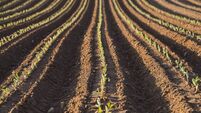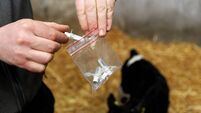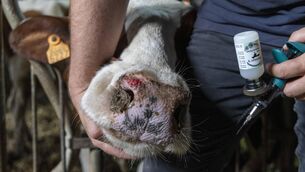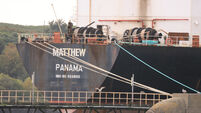Oliver Moore: Discover science under Devil’s Bit

Sean O’Farrell’s certified organic 23 hectares, beneath the Devil’s Bit, is now taking primary, secondary and transition year students, all of whom get a very animated educational experience from Sean, who has a Masters in Biodiversity and Conservation (TCD).
Visiting students on educational outings or school tours can select some or all of the following activities.
* Observing, identifying and exploring a variety of living things. interconnectivity (for all age groups, using hand lenses, ID charts).
* Why Organic?. Stimulation of questioning the benefits to wildlife and people. Measurement of food miles from garden to kitchen.
* Exploring Soil; its formation; creatures within; sowing and growing healthy food for healthy diets.
* Geography, land forms, waterways and evidence of landscape history. For senior classes, using maps and compass. .
* Trees (what they give us), and trees in farming heritage. For all classes, includes tree ID skills.
* Re-enacting ringfort life. Pupils engage in willow weaving, iron working, leather use, fencing with hazel, picking wild food. Theme: needs and wants.
* Investigating survival strategies of mini-beasts in the ponds and river (for senior classes)
For leaving cert students, his farm can cater for both agricultural science and biology. The courses offered also suit six transition year curriculum units, as well as options for junior cert and primary school students too.
Sean O’Farrell told me about recent visits. Typically he can take 30 per day over four days from a school.
“For primary school students, a lot of the resources are there. Take geography. Geography is in the landscape, through formations from the ice age, sand and gravel pits, man-made hedge rows, which in turn ties into history.
"The house itself here too, it’s travelled all the way from Canada. So, a recent primary school group had a map in their workbook, and tracked the house’s route from the west coast of Canada to here.
“It was built over there with western red cedar logs, then taken down, numbered, and put back up again.
“They figure out that the ship goes down the Panama canal, over to Rotterdam, into a smaller ship, and over to here.”
“We take them to the soft fruit area in the garden, and we look at the blueberries and we talk about how far there are from the door. They measure that, it’s 20 metres.
"We have a packet of blueberries sitting there too, from Spain, so we talk about food miles. We do similarly with pears and apples, rocket and kale that are growing there too.
“In the other gardens, the senior classes can do more measurements and study the soil, earthworms, woodlice, centipedes and millipedes.
“A group who came here in May, had to identify the grasses which were in flower, for their workbooks. So they had to find red and white clover, forget-me-nots, dandelions and more.
“We also studied the life cycle of the dock beetle, using a microscope out in the field.
“Something they especially enjoyed was the ring fort. There, my two colleagues had a fire going. They made some bread from dough, and the pupils got to sample the warm bread there and then.
"Around the ring fort we also have some old farming kit such as the horse drawn plough, old leather boots, and a woven hazel and clay structure, with the wattle and daub.
I have some man-made ponds, which are great for fresh water ecology, and chickens and donkeys, as well as the cattle.
"Ag Science students can, as part of their practicals, learn about identifying animal breeds, and discuss characteristics, assess body condition score.”









